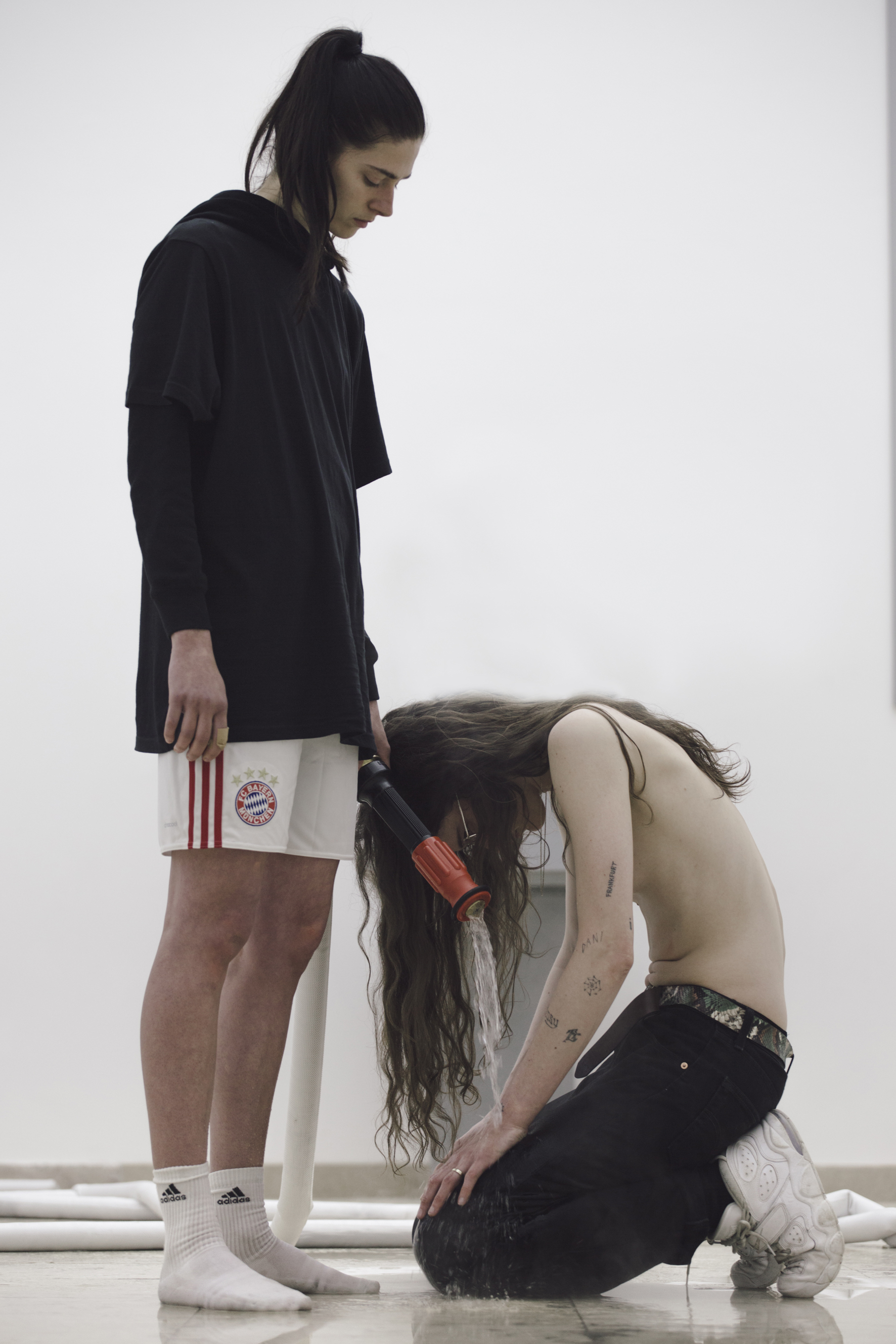
It was impossible to avoid talk of Anne Imhof’s Faust at the Venice Biennale this year—the work that won the German artist the Golden Lion for national participation. The four dogs chained up outside, quite accidentally set into a frenzy by the water spouting from the nearby Canadian pavilion, piqued visitors’ interest early on, and from the opening preview days suited crowds were seen clamouring to get into the pavilion, providing Imhof’s punchy, physical work with plenty of new, heaving bodies for each performance.
“Anne Imhof’s Faust at the German Pavilion is compelling,” Louisa Elderton wrote for Elephant during the Biennale’s preview. “Raised upon a glass platform that extends through the entire architecture, symbolic props are placed underneath including BB gun pellets, a fetish dog collar, teaspoons (the type that you might find lying on the floor of an addict’s house) and a pipeline that leads outside, spilling water into a bleeding, overflowing puddle. Lines drawn with paraffin burn beneath viewer’s feet—a strange vertigo ensuing. Upon this stage, Imhof’s host of disaffected, androgynous youths roam amid ambient sounds, as someone begins to utter a melodic chant that suggests a call to arms. The enigmatic moment feels simultaneously contemporary and mythical, Nike sports gear upon strangely timeless and unknowable characters. At a time where young people face increasing education fees, zero-hour contracts, uncertain pensions and unstable health-care systems, the artist creates a liminal space that reflects an indeterminate future.”
Even in its resting the state, the pavilion provided a compelling set, as visitors wandered around the space as in the dying moments of a club after the lights have come up—physical restraints, foot marks and empty but body-dented black leather matresses spread about the strangely quiet space. Faust was a huge step up again from the artist’s atmospheric Angst II, which happened in 2016 at Hamburger Bahnhof during Berlin Art Week, and has propelled Imhof into the major leagues.





